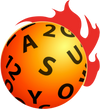Training Working Memory Through the Eyes

Working memory is your brain’s ability to hold and use information in the moment—like remembering directions while walking, holding a name you just heard, or keeping track of your grocery list without writing it down. In Parkinson’s disease, working memory often becomes sluggish or unreliable, which can impact conversations, task completion, and daily independence. But here’s something most people don’t realize: you can train working memory through your eyes.
Working memory relies on fast communication between multiple areas of the brain, including the prefrontal cortex, parietal lobes, and basal ganglia—some of the same regions responsible for eye movement control. When you track objects, shift your gaze, or focus on moving targets, you’re doing more than moving your eyes—you’re training the brain to hold, update, and act on information in real time.
Studies show that people with Parkinson’s tend to perform more slowly on visual working memory tasks and have difficulty updating information held in short-term memory (Dalrymple-Alford et al., 1994). However, targeted training that involves quick eye movements and attention shifts has been found to improve both processing speed and mental retention. This type of visual training activates the same cognitive pathways that working memory depends on, helping the brain become more efficient at “holding onto” information.
That’s exactly what the BrainSpeed Ball® is designed to support. As users follow the ball with their eyes, quickly identify colored letters or numbers, and respond aloud, they’re strengthening the brain’s sense-think-speak loop—a direct tap into working memory. It’s a simple, accessible way to repeatedly activate the systems responsible for short-term recall, attention, and decision-making, all while having fun.
If you or someone you love is living with Parkinson’s and struggling with forgetfulness, distraction, or slow thinking, eye movement training offers a powerful brain-based tool. By practicing visual challenges daily—especially with tools like the BrainSpeed Ball®—you can support stronger memory, sharper focus, and more confident daily thinking.
Learn about our Parkinson's Specific Training Program Here:
Sources:
Dalrymple-Alford, J. C., Kalders, A. S., Jones, R. D., & Watson, R. W. (1994). A central executive deficit in patients with Parkinson’s disease. Journal of Neurology, Neurosurgery, and Psychiatry, 57(3), 360–367. https://doi.org/10.1136/jnnp.57.3.360
Oosterman, J. M., Vogels, R. L., van Harten, B., Gouw, A. A., Poggesi, A., Scheltens, P., … & de Haan, E. H. (2009). Assessing mental flexibility: neuroanatomical and neuropsychological correlates of the trail making test in elderly people. The Clinical Neuropsychologist, 23(5), 909–927. https://doi.org/10.1080/13854040802691162

